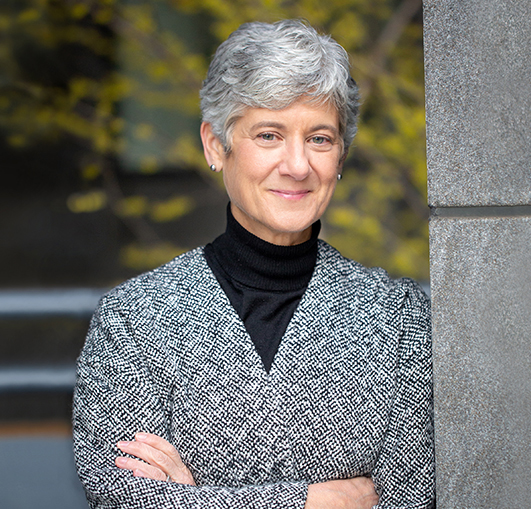 The World Intellectual Property Organization (WIPO) has published its annual World Intellectual Property Indicators. The 2015 report dissects the macro trends associated with filing activity and registrations for 2014 in the following intellectual property areas: patents, trademarks, industrial designs, and plant varieties. Estimates for design patent applications are based on data from approximately 140 patent offices, encompassing both direct national and regional applications, as well as applications received through the Hague System for the International Registration of Industrial Designs.
The World Intellectual Property Organization (WIPO) has published its annual World Intellectual Property Indicators. The 2015 report dissects the macro trends associated with filing activity and registrations for 2014 in the following intellectual property areas: patents, trademarks, industrial designs, and plant varieties. Estimates for design patent applications are based on data from approximately 140 patent offices, encompassing both direct national and regional applications, as well as applications received through the Hague System for the International Registration of Industrial Designs.
The twenty-year era of growth in industrial design patent applications came to an abrupt end in 2014. Despite rapid, double-digit growth at the beginning of the decade, applications in 2014 fell by nearly 10% with only 854,400 new applications filed worldwide (down from 956,600 in 2013).
Decline in Applications Filed
The decline in global applications stems primarily from the pronounced decrease in resident filings at the State Intellectual Property Office of the People’s Republic of China (SIPO), which fell 14.9% over the past year. Excluding China from the data-set, global applications increased, but only by 0.3% in 2014. Reductions in resident filings were responsible for declines not only in China, but in seven of the top 20 offices. In total, 11 of the top 20 offices experienced a net reduction in design filings during 2014. Ukraine (-29.5%) and China (-14.4%) were the only top 20 countries to experience double-digit filing declines, however, notable single-digit drops were experienced in Australia (-4.6%), Japan (-4.5%), Turkey (-4.5%), Brazil (-3.8%), the Republic of Korea (South Korea)(-2.3%), and the United States (-1.8%).
While declines were the norm, nine of the top 20 offices experienced gains, including five European offices: France (+7.6%), Germany (+6.6%), the Russian Federation (+5.5%), Switzerland (+2.8%), and the Office for Harmonization in the Internal Market (OHIM, now the European Union Intellectual Property Office or EUIPO) (+1.3%). In contrast to previous years, the shift towards the OHIM did not result in across-the-board declines among major European Union (EU) offices. The largest gains were seen in three countries classified by the World Bank as “upper middle-income,” the Islamic Republic of Iran (+83.7%), India (+9.6), and Morocco (+9.2%).
China Remains the Leader in Applications Received
Of the more than 850,000 applications filed worldwide, 66%, or 564,555, were received by SIPO. While still the dominant leader in global filings, SIPO saw a 14.4% decline in overall registrations during 2014, the first decline since China began receiving design applications in 1985. Contributing to this historic slow-down are several factors, including the sharp decline in resident filings likely stemming from the stagnating Chinese economy. However, not all signs were negative for the Chinese economy as non-resident applications grew by 6.3%. Again China bested the second largest office, OHIM, by nearly 500,000 applications.
Higher–Income Countries Saw the Most Filings
The 2015 WIPO report utilizes World Bank income classifications to categorize countries into four economic groups based on gross national income per capita (low-income, lower middle-income, upper middle-income, and high-income). Of the 20 offices with the most filings, 13 are from high-income countries, four from upper middle-income countries, three from lower middle-income countries and, unlike 2013, none were from low-income countries. Altogether, upper middle-income countries, led by China, accounted for 57.7% of global application filings, nearly double their total from a decade prior. Excluding China, the remaining upper middle-income countries (The Islamic Republic of Iran, India, and Morocco) accounted for only 8.1% of the global total. High-income countries accounted for 38.3% of the 2014 filings, a decrease from 63.9% in 2004, caused in large part by China’s rapid growth in filings during the same period. Regionally Asia accounted for 67.2% of all filings during 2014, followed by Europe’s 25.5% and North America’s 3.6%.
Residents Still Account for the Majority of Applications
Of all designs filed globally, 84.5% were resident applications (i.e., applications filed by an applicant residing in the country or region for which the IP office has jurisdiction), while 15.5% were non-resident applications (i.e., applications filed by an applicant outside the jurisdiction of the IP office). This represents a nearly 1% increase in non-resident applications since 2013.
The geographic region with the highest percentage of resident applications was Asia, with 92.6%, an increase from 85.8% a decade prior. Alternatively, the region with the lowest percentage of resident filings was Oceania (the region incorporating Australia and the islands of the Central and South Pacific) with 37.4% resident applications, a decrease of more than 12% since 2004. The region with the largest increase in resident applications was Africa with a decades-long increase of nearly 40%: from 22.5% in 2004 to 60.6% in 2014.
When examining countries according to income classifications, the upper middle-income group, including China, had the highest percentage of resident filings in 2014 with 93.4%. Chinese resident applications accounted for 97.1% of the country’s total filings. Atop the national income scale, high-income countries had the second highest percentage of resident filings with 73.4%, followed by lower middle-income countries with 61.7% and low-income countries with 40.4%. Lower middle-income countries have enjoyed the largest 10-year increase in resident filings, which have risen from 38.9% in 2004 to 61.7% in 2014, a more than 20% increase.
The Locarno Classification Breakdown Remains Stable
The Locarno Classification categorizes industrial designs into one of 32 classes. Furnishing related designs accounted for 11.1% of all industrial designs in 2014, followed by articles of clothing with 8.1% and graphic symbols and logos with 7.2%. While exact figures fluctuated slightly, overall variations in the distribution of Locarno classes remained stable with annual changes below 1%. In all but two of the top 10 offices, the top three industry sectors accounted for more than half of total filings, indicating national specialization in a handful of sectors. For example, furnishing, information retrieval equipment, and clocks and watches were the most recorded classes in the OHIM, China/Hong Kong, and Switzerland respectively.
Hague System Registrations Down Slightly
WIPO recorded 2,703 international registrations (IRs) under the Hague System in 2014. While registrations were down 1.1% in 2014, the number of total designs registered (13,504) increased by 5.5% (IRs may contain more than one design). The lion’s share of the designs registered stem from Germany and Switzerland, which combined accounted for more than half of all Hague registrations. They were followed by France (1,361), Italy (825), and the United States (749). Of the top 5, only the United States (+14.2%) and Switzerland (1.5%) experienced growth.
The most designated Hague member was the EU, accounting for 17.5% of all designs in registrations, followed by Switzerland (15.9%), Turkey (9.6%), Norway (4.3%), and Singapore (4.3). The strongest growth in registrations was experienced by the EU (+6%) and Switzerland (+5.4%), while Norway (-15.7%) experienced the steepest decline. With Japan and the United States becoming full members of The Hague System in 2015, the numbers in next year’s WIPO report could look quite different.

![[IPWatchdog Logo]](https://ipwatchdog.com/wp-content/themes/IPWatchdog%20-%202023/assets/images/temp/logo-small@2x.png)

![[Advertisement]](https://ipwatchdog.com/wp-content/uploads/2024/04/Patent-Litigation-Masters-2024-sidebar-early-bird-ends-Apr-21-last-chance-700x500-1.jpg)

![[Advertisement]](https://ipwatchdog.com/wp-content/uploads/2021/12/WEBINAR-336-x-280-px.png)
![[Advertisement]](https://ipwatchdog.com/wp-content/uploads/2021/12/2021-Patent-Practice-on-Demand-recorded-Feb-2021-336-x-280.jpg)
![[Advertisement]](https://ipwatchdog.com/wp-content/uploads/2021/12/Ad-4-The-Invent-Patent-System™.png)







Join the Discussion
No comments yet.